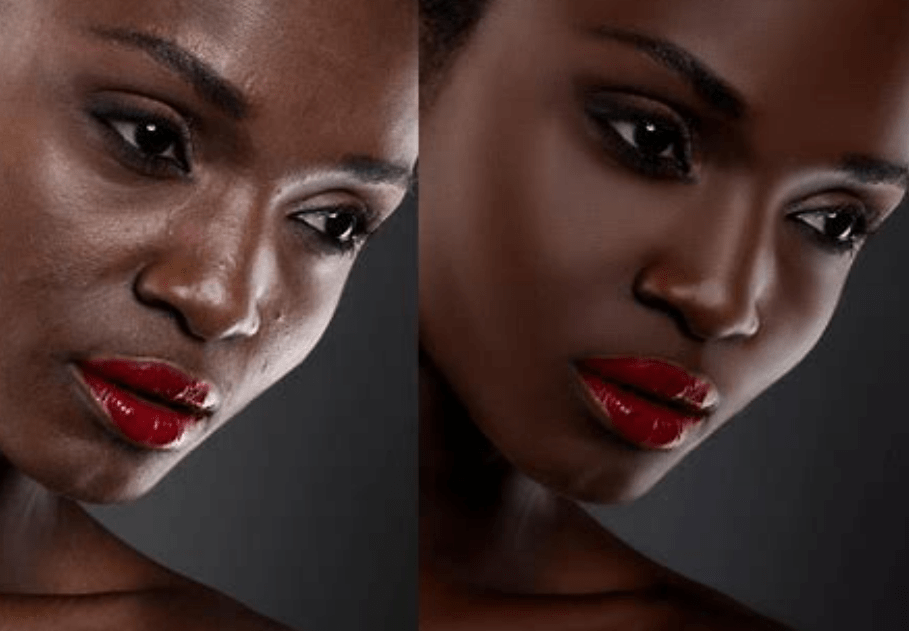Achieve Picture-Perfect Results with Professional Photo Retouching Techniques
Where images play a crucial role in capturing attention, photo retouching has become an essential tool for creating visually stunning photographs. Whether you are a professional photographer or an amateur enthusiast, understanding the importance of photo retouching can make a significant difference in the quality of your images. Photo retouching allows you to enhance the appearance of your photographs by removing imperfections, correcting colors, and adding artistic effects. It is a technique that can transform an ordinary photograph into a picture-perfect masterpiece.

Photo retouching offers numerous benefits, especially in the world of commercial photography. It allows for the removal of blemishes, wrinkles, and other imperfections that can detract from the overall appeal of a photograph. Whether it’s a fashion shoot or a product advertisement, photo retouching ensures that every detail is flawless, creating a lasting impression on the viewers.
Common photo retouching techniques
Photo retouching techniques can vary depending on the desired outcome and the type of photograph being edited. However, there are some common techniques that are widely used in the industry. One such technique is the removal of skin imperfections. Whether it’s acne, scars, or redness, photo retouching can make the skin appear smooth and blemish-free.
Another common technique is color correction. This involves adjusting the colors in a photograph to achieve a more balanced and visually appealing result. Color correction can help enhance the mood and tone of an image, making it more captivating to the viewer.
Additionally, photo retouching often involves adjusting the lighting and exposure of a photograph. This can help bring out the details in the shadows and highlights, resulting in a more dynamic and visually striking image.
Tools and software for photo retouching
To achieve professional results in photo retouching, it is essential to have the right tools and software at your disposal. Adobe Photoshop is the industry standard when it comes to photo retouching. This powerful software offers a wide range of tools and features that allow for precise and detailed editing. From removing blemishes to adding artistic effects, Photoshop provides endless possibilities for enhancing your photographs.
Apart from Photoshop, there are also other software options available for photo retouching. Lightroom, for example, is a popular choice among photographers for its intuitive interface and efficient workflow. It provides comprehensive editing capabilities, allowing for quick adjustments and enhancements.
In addition to software, having the right hardware is equally important. A high-quality monitor with accurate color representation and a calibrated color profile is essential for ensuring that your edits are accurate and consistent across different devices.
Understanding color correction in photo retouching
Color correction is a vital aspect of photo retouching that can significantly impact the overall appearance of a photograph. It involves adjusting the colors in an image to achieve a more accurate and visually appealing result. Color correction helps ensure that the colors in a photograph are true to life and convey the intended mood and atmosphere.
One of the primary tools used for color correction is the color balance adjustment. This tool allows you to adjust the balance between the primary colors – red, green, and blue – in an image. By fine-tuning these color channels, you can achieve the desired color balance and eliminate any color casts.
Another important aspect of color correction is adjusting the saturation and vibrance of the colors. Saturation refers to the intensity of the colors, while vibrance enhances the muted colors without affecting the already vibrant ones. Fine-tuning these settings can help bring out the richness and depth of the colors in a photograph.
Color correction also involves adjusting the white balance, which ensures that the whites in an image appear neutral and not tinted. By correcting the white balance, you can eliminate any unwanted color casts caused by different lighting conditions.
Skin retouching techniques for flawless portraits
When it comes to portrait photography, achieving flawless skin is often a top priority. Skin retouching techniques allow you to smooth out the skin, remove blemishes, and create a more polished and refined look.
One of the most commonly used techniques in skin retouching is frequency separation. This technique involves separating the texture and color of the skin into different layers, allowing for targeted adjustments. By retouching the texture layer, you can eliminate blemishes, wrinkles, and other imperfections while preserving the natural skin texture. On the other hand, retouching the color layer allows for adjustments in skin tone and overall color balance.
Another effective technique in skin retouching is dodge and burn. Dodge refers to the process of lightening specific areas of the skin, while burn involves darkening certain areas. This technique helps create a more three-dimensional look by enhancing the contours of the face and adding depth. It is particularly useful for sculpting the features and highlighting the natural beauty of the subject.
In addition to these techniques, it is crucial to maintain a balance between natural-looking skin and excessive retouching. Over-retouched skin can appear artificial and unrealistic. The goal is to enhance the natural beauty of the subject while still maintaining a sense of authenticity.
Enhancing details in landscape and product photography
Photo retouching is not limited to portrait photography; it also plays a crucial role in enhancing details in landscape and product photography. Whether you are capturing the beauty of a majestic landscape or showcasing the intricate details of a product, photo retouching can take your photographs to the next level.
In landscape photography, photo retouching can help enhance the colors, contrast, and sharpness of the image. Adjustments to the saturation and vibrance can bring out the vibrant colors of nature, making the photograph more captivating. Additionally, retouching the shadows and highlights can help reveal details that may be lost in the original image.
Product photography often requires meticulous attention to detail, and photo retouching can help enhance these details further. Whether it’s removing dust and scratches or adjusting the lighting to highlight specific features, photo retouching ensures that every aspect of the product is showcased in the best possible way.
In today’s digital world, where social media and e-commerce platforms are flooded with images, photo retouching has become even more critical. Whether you are an influencer looking to create a visually cohesive feed or a business owner wanting to showcase your products online, photo retouching can help you stand out from the crowd.
For social media, photo retouching can involve adjusting the colors and tones to create a consistent aesthetic. Whether it’s a warm and cozy theme or a bright and vibrant one, photo retouching ensures that every image fits seamlessly into the overall feed. Additionally, retouching can help create eye-catching visuals by enhancing the details, adding artistic effects, or creating unique compositions.
In e-commerce, photo retouching is essential for showcasing products in the best possible light. Whether it’s clothing, accessories, or home decor, retouching can help create images that are visually appealing and enticing to potential customers. From adjusting the colors to enhancing the details, photo retouching ensures that every product is presented in its best form.
Tips for achieving professional results in photo retouching
Achieving professional results in photo retouching requires skill, practice, and attention to detail. Here are some tips to help you take your photo retouching skills to the next level:
Master the basics: Before diving into advanced techniques, make sure you have a solid understanding of the basic tools and concepts in photo retouching. Familiarize yourself with the various adjustment layers, blending modes, and selection tools available in your chosen software.
Use non-destructive editing: Non-destructive editing allows you to make changes to your photographs without permanently altering the original image. By using adjustment layers and masks, you can experiment with different edits and easily revert to the original if needed.
Pay attention to details: The key to professional photo retouching is in the details. Zoom in and examine the image closely to identify any imperfections that need to be addressed. Take the time to fix small blemishes, adjust minor color shifts, and refine the overall composition.
Maintain a consistent workflow: Developing a consistent workflow can significantly improve your efficiency and the quality of your edits. Create a step-by-step process that works for you and stick to it. This can include tasks like cropping and straightening, color correction, skin retouching, and final adjustments.
Seek feedback and learn from others: The best way to improve your photo retouching skills is to seek feedback from others and learn from their expertise. Join online communities, participate in forums, or attend workshops where you can share your work and receive constructive criticism.
Hiring professional photo retouching services
While mastering photo retouching can be a rewarding journey, sometimes it may be more practical to hire professional photo retouching services. Professional retouchers have the experience, skills, and expertise to bring out the best in your photographs. Whether you have a large volume of images that need to be retouched or you simply want to ensure the highest quality results, outsourcing your photo retouching needs can save you time and effort.
When hiring professional photo retouching services, it is essential to do thorough research and choose a reputable provider. Look for retouchers who specialize in the type of photography you are working with and have a portfolio that aligns with your aesthetic preferences. Communication is key, so make sure to clearly communicate your expectations and provide detailed instructions to ensure the desired outcome.

Conclusion
Photo retouching is a powerful technique that can transform ordinary photographs into visually stunning works of art. Whether you are a professional photographer or an enthusiast, understanding the importance of photo retouching and mastering the necessary techniques can significantly enhance the quality of your images. From removing blemishes and correcting colors to enhancing details and creating a cohesive aesthetic, photo retouching offers endless possibilities for achieving picture-perfect results.



